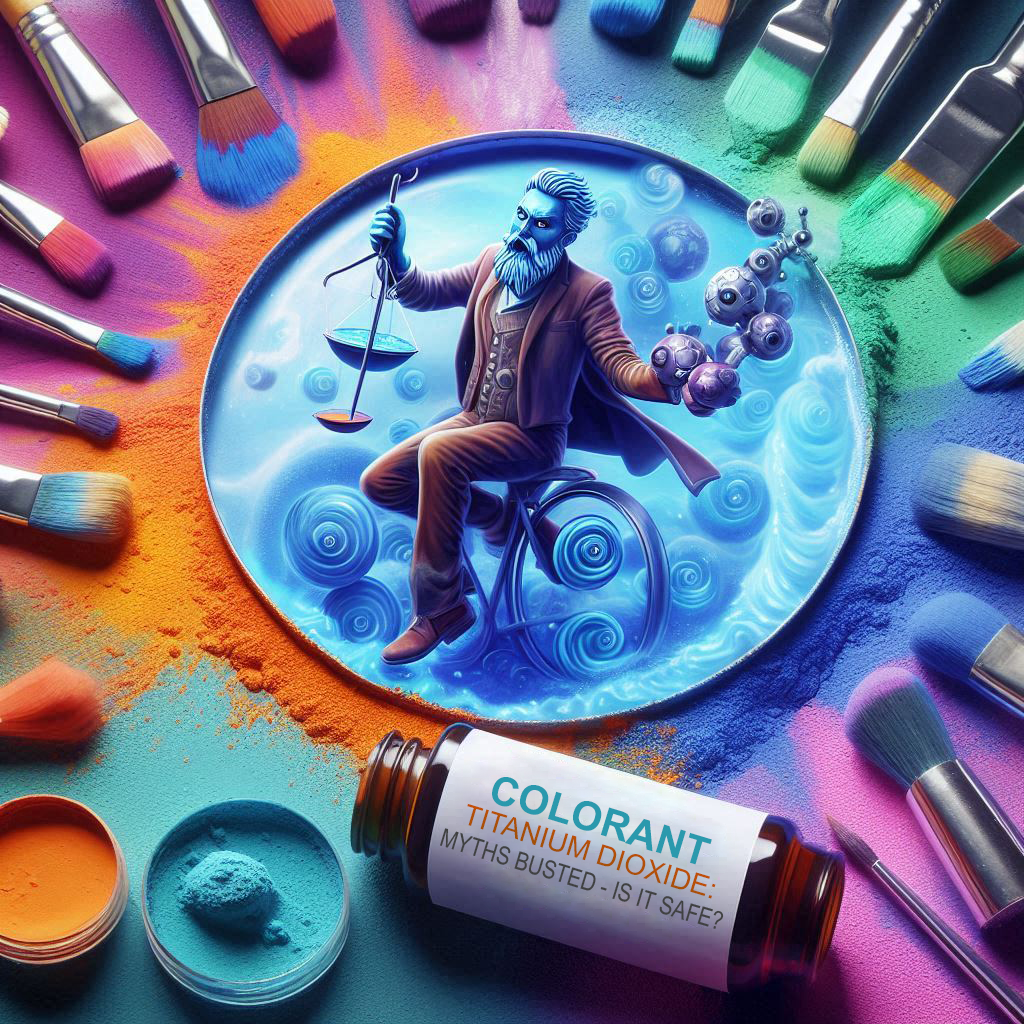Colorant Titanium Dioxide: Walk down the aisles of any grocery store, flip through a makeup catalog, or even inspect your toothpaste tube. There’s a high chance you’ll encounter titanium dioxide (TiO2) listed as one of the ingredients. But what exactly is it, and why does it often spark heated debates? In this article, we will dive deep into titanium dioxide, separate fact from fiction, and provide a clearer understanding of its safety and applications.
Understanding Titanium Dioxide
What Is Titanium Dioxide?
Titanium dioxide is a naturally occurring mineral sourced mainly from ilmenite, rutile, and anatase. It’s famously known for its white pigment and is widely used as a colorant in various industries.
Key Uses
- Food Industry: Utilized to create a bright white color in products like candies, sauces, and dairy items.
- Cosmetics: Found in sunscreen, makeup, and skincare products due to its UV-filtering properties.
- Paints and Coatings: Employed to provide opacity and durability.
- Pharmaceuticals: Used to color pills and capsules for easier identification.
Myths and Misconceptions: Colorant Titanium Dioxide
Myth 1: Titanium Dioxide Is Toxic
One prevalent myth is that titanium dioxide is toxic to humans. This stems from studies showing harmful effects at high doses, particularly when inhaled as a nanoparticle. However, most daily exposures, such as through food or cosmetics, involve much lower concentrations.
Fact-Check
- The European Food Safety Authority (EFSA) and the U.S. Food and Drug Administration (FDA) have both deemed titanium dioxide safe for consumption in regulated amounts.
- Studies typically highlighting toxicity concerns focus on inhalation of large quantities of nanoparticulate titanium dioxide, not the micronized versions used in foods and cosmetics.
Myth 2: Titanium Dioxide Causes Cancer
Another frightening myth is that titanium dioxide can cause cancer. This myth generally springs from its classification by the International Agency for Research on CancerIARC) as a Group 2B carcinogen, meaning it is “possibly” carcinogenic to humans.
Fact-Check
- The classification by IARC is based on limited evidence, primarily from studies where workers inhaled large quantities of titanium dioxide dust over extended periods.
- No conclusive evidence exists that ingestion or topical application of regular titanium dioxide poses a significant cancer risk to the general public.

Myth 3: It’s In Everything, and That’s Bad
With titanium dioxide’s ubiquitous presence in everyday products, some believe it must pose a significant danger by mere virtue of its pervasiveness.
Fact-Check
- Titanium dioxide’s widespread use is largely due to its incredible effectiveness and versatility. It isn’t universally hazardous but should be used responsibly.
- Regulatory agencies continually review and set safety thresholds to ensure consumer safety.
The Science of Safety: Colorant Titanium Dioxide
How Safety Is Assessed
Regulations and Approvals
- European Food Safety Authority (EFSA): Conducts rigorous assessments and has established maximum usage levels for titanium dioxide in various food categories.
- U.S. FDA: Evaluates studies and data, establishing approved uses for titanium dioxide.
Types of Studies
- In Vivo and In Vitro Assessments: Various toxicity and carcinogenicity studies are conducted to analyze the effects of titanium dioxide at different concentrations and forms.
- Epidemiological Reviews: Studies tracking populations exposed to titanium dioxide over years to identify any potential long-term health impacts.
Personal Beats and Perspectives: Colorant Titanium Dioxide
When considering my own experience with titanium dioxide, I recall a childhood spent enjoying marshmallows and brightly colored candies, never realizing there was a debate over their safety. This personal tie highlights a crucial point: familiar products and ingredients often carry unseen complexities. But it doesn’t always mean danger lurks behind every label. With robust regulatory frameworks in place, it’s clear that titanium dioxide’s benefits often outweigh the risks in regulated amounts.
Conclusion
Summing Up
Titanium dioxide finds its way into many aspects of modern life due to its unique properties. The myths surrounding its safety can often overshadow the extensive research and regulatory measures ensuring its safe use for consumers.
Key Takeaway: In regulated amounts, as found in everyday products, titanium dioxide is generally considered safe. The key is ongoing research and adherence to guidelines set by health authorities to maintain this assurance.
Call to Action
Stay informed and critical of alarming headlines. Always consider scientific consensus and regulatory insights when evaluating ingredients like titanium dioxide. If you have further concerns about specific products, consult a healthcare provider to navigate your choices confidently.
For additional reading and external resources:
By understanding the nuances and data-backed realities of titanium dioxide, we can make more informed decisions about the products we use daily.
TiO2 Pigment: The Secret Ingredient For Vibrant Colors





